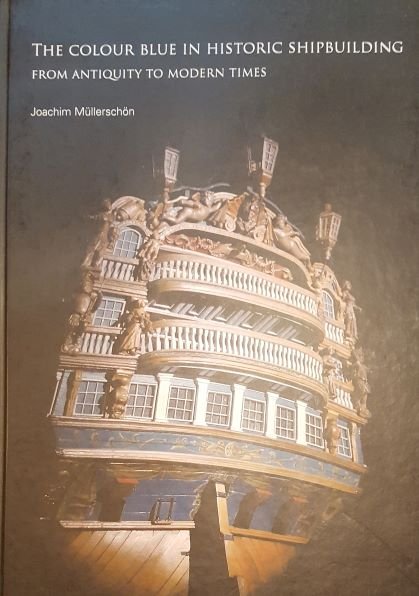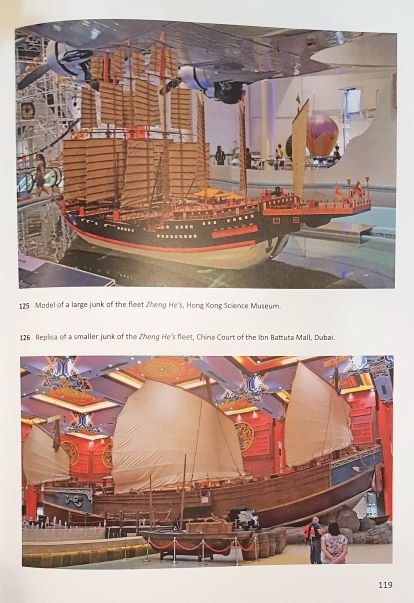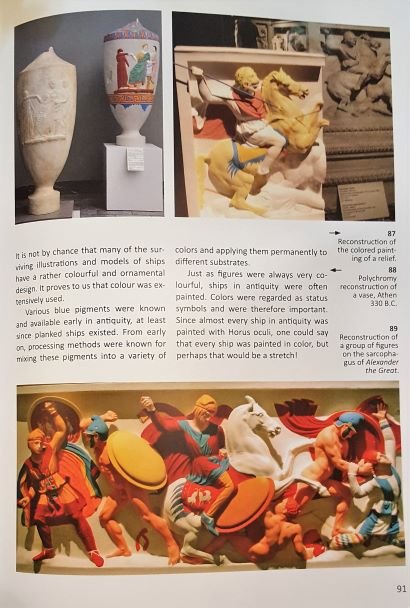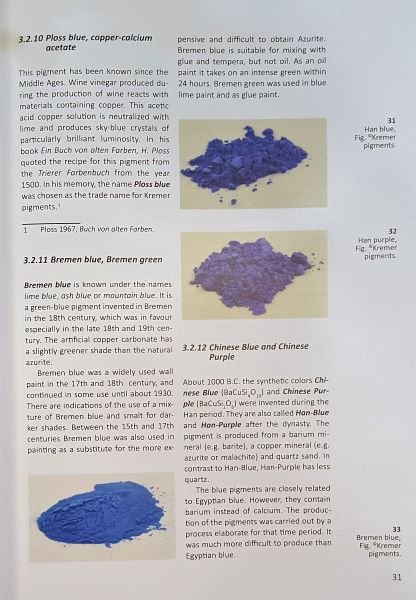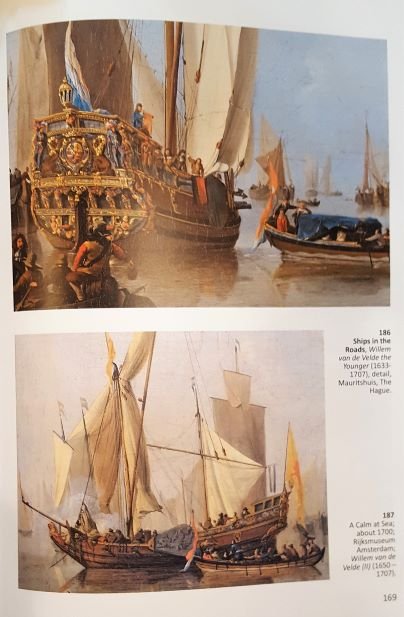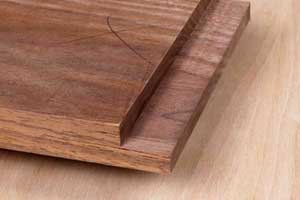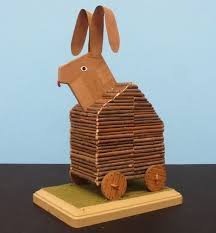-
Posts
10,441 -
Joined
-
Last visited
Content Type
Profiles
Forums
Gallery
Events
Everything posted by ccoyle
-
If you are thinking of the Kammerlander kits, they are quite different in construction. I think that MK's technique is pretty unique at this point in time, but I doubt it will take long for other manufacturers to adopt it, at least to some degree. Imitation is the sincerest form of flattery, so they say.
-

Info about this paper Titanic kit I found at Goodwill
ccoyle replied to Lucius Molchany's topic in Card and Paper Models
This kit is still in print and commercially available. See here, for example. -
To get an excellent idea of exactly what is involved in doing a solid-hull model right, check out Chuck Passaro's practicum for the Model Shipways Sultana kit. You can download it here.
-

Mastermind game board by nikbud - FINISHED - Wood
ccoyle replied to nikbud's topic in Non-ship/categorised builds
First player uses colored pegs to create a five-peg "code" sequence. Second player makes a series of attempts at cracking the code. First player uses a second set of pegs to indicate 1) guessed pegs that are both the correct color and in the correct slot in the sequence, and 2) pegs that are the correct color but not in the correct sequence. Play progresses until the second player either cracks the code or runs out of guesses. -
Much of the "chaos" in kit scales is a result of the past practice of designing a kit to fit into a particular-sized box. These were referred to as "box scales".
-
Add posts as you go. Whatever kind you prefer. I prefer acrylics because they can be cleaned with water. Definitely do as much as possible off the model, then touch up afterwards. Trying to do this on the model will be messy. Cheers!
- 13 replies
-
- constructo
- bounty
-
(and 1 more)
Tagged with:
-
Congratulations, Phil! That was no small challenge you took on.
- 355 replies
-
- prince de neufchatel
- schooner
-
(and 3 more)
Tagged with:
-
Wow ... absolutely beautiful in every detail!
- 306 replies
-
- schooner
- la jacinthe
-
(and 1 more)
Tagged with:
-
THE COLOUR BLUE IN HISTORIC SHIPBUILDING: From Antiquity to Modern Times Joachim Muellerschoen 2019 19 cm x 27 cm format, 200 pages 190 illustrations, mostly color SRP: 76.80 € Okay, raise your hand if, like me, your attention to the matter of which shade of blue to slap on a model is or was heavily influenced by whatever shade you happened to have on hand. Anybody? Well, perhaps I'm not quite as inattentive to detail as I've just suggested, but this book did enlighten me to the fact that there is blue, and then there is historically correct blue. There are several things that you will notice about this nifty little volume when you first lay hold of it. First is that the title runs from bottom-to-top along the spine in the German fashion, which makes sense since the author is German. Happily for all of us English speakers, the English version of The Color Blue in Historic Shipbuilding has been nicely edited by native English-speaker (well, Canadian -- close enough 😉 ) David Antscherl, so it reads very well. Upon flipping the book open to any page, one notices a wealth of illustrations, consisting in the main of various models, paintings, full-size vessels, and artifacts that demonstrate the use of blue down through the ages. If you turn to the back of the book, you'll find eighteen pages of references, which show that Dr. Muellerschoen is no slouch when it comes to doing thorough research, and the depth and breadth of the information he provides is proof of that. And finally, something that is not immediately obvious is that this very nice looking book is self-published and shows the high quality of product that is now possible when choosing this particular publishing option. The title of the book is perhaps a little misleading, but not in a bad way. The discussion is not strictly limited to the use of blue in shipbuilding, but covers a number of related topics as well, beginning first of all with historical context. I found it particularly interesting to learn that some cultures had no word for blue, or else lumped it in with green and/or gray. Today of course we associate blue with royalty, but Dr. Muellerschoen shares some fascinating insight on how very much differently blue was viewed, figuratively, by ancient cultures, citing diverse examples from Egypt to East Asia and points in between. The history of blue is followed by the science of blue, with particular attention given to the sources of various blue pigments. It's very interesting to learn some of the history of these pigments and goes some ways toward explaining why we see particular shades of blue in different time periods and locations. Dr. Muellerschoen also devotes page space to describing how blue was used in applications other than shipbuilding such as architecture and various forms of art. Not surprisingly, as Dr. Muellerschoen points out, blue and other colors were used in ways that might seem rather strange to our western notions of color, shade, and hue. The bulk of the book, as the title suggests, is devoted to an overview of blue in shipbuilding, from ancient times to 'modern', i.e. the early 19th century. This survey covers not only European conventions but those of other cultures as well, including examples from the Mediterranean, the Far East and elsewhere. There is something of interest here for builders of just about every kind of wooden ship construction out there. The photos in this section are a wealth of images of modern and contemporary models, preserved and reconstructed ships, and a good number and variety of contemporary paintings. This book is as much a pleasure to look at as it is to read. When the publication of this book was first announced, there were a few people who wondered aloud just how much could be written about such a seemingly narrow and esoteric subject. Folks needn't have worried -- Dr. Muellerschoen has produced a very engaging and attractive volume that is deserving of a place in any nautical history buff's library. Thanks to Dr. Muellerschoen for providing this copy for review. To purchase, head over to http://www.modellbau-muellerschoen.de/buch-en.htm. CDC
-

kit review 1:35 Viking Knarr - Dusek Ship Kits
ccoyle replied to James H's topic in REVIEWS: Model kits
An excellent review and a fine-looking kit! I can't for the life of me, though, figure out why manufacturers are still using the old-fashioned kit blocks, which look terrible, when much better blocks are available. That's a very minor complaint in this case, since the cost of replacing a whopping two blocks shouldn't break anyone's bank. -
Nope, no template, but there are instructions on how to start and name one pinned at the top of that forum. Good luck with your project!
-
It depends on whether you're looking for true PoF or not. BlueJacket offer the Baltimore clipper Jefferson Davis, and though the ad copy says "true plank on frame", I believe it is actually modified from actual practice. Makes a great model, though.
-
Hello, Radek. Google Translate has much improved over the years. The meaning of your posting is clear. Cheers!
-
I had a Cant Z 501 kit in 1/72 back in the day -- don't remember the manufacturer. It was partially completed when my 18-year modeling hiatus began.
- 345 replies
-
- graf zeppelin
- trumpeter
-
(and 2 more)
Tagged with:
-
I'm just a teensy bit sad to see that the entire hull has been oiled. I rather liked the contrast between the oiled and un-oiled strakes above and below the wale -- perhaps something for subsequent builders to think about. Nevertheless, that's not meant to denigrate your work in any way -- you are really doing an exquisite job on this project.
- 315 replies
-
- master korabel
- avos
-
(and 1 more)
Tagged with:
-
Welcome from a California ex-pat (grew up in Humboldt Co., most recently from Mariposa)! I have no experience with that kit, but I suspect with its flat sides and bottom that it would be a good kit to start with. The owner of Bluejacket is a member here -- look for user "MrBlueJacket". BTW, model railroaders often bring an impressive set of weathering skills to the table. Cheers!
-

Sam3
ccoyle replied to Sam3's topic in Building, Framing, Planking and plating a ships hull and deck
It's been so long since I did that task that I don't remember the number. But there are a lot of completed Fly and Pegasus models in our gallery, plus build logs of models still in progress, so checking those out should provide some hints. Cheers!
About us
Modelshipworld - Advancing Ship Modeling through Research
SSL Secured
Your security is important for us so this Website is SSL-Secured
NRG Mailing Address
Nautical Research Guild
237 South Lincoln Street
Westmont IL, 60559-1917
Model Ship World ® and the MSW logo are Registered Trademarks, and belong to the Nautical Research Guild (United States Patent and Trademark Office: No. 6,929,264 & No. 6,929,274, registered Dec. 20, 2022)
Helpful Links
About the NRG
If you enjoy building ship models that are historically accurate as well as beautiful, then The Nautical Research Guild (NRG) is just right for you.
The Guild is a non-profit educational organization whose mission is to “Advance Ship Modeling Through Research”. We provide support to our members in their efforts to raise the quality of their model ships.
The Nautical Research Guild has published our world-renowned quarterly magazine, The Nautical Research Journal, since 1955. The pages of the Journal are full of articles by accomplished ship modelers who show you how they create those exquisite details on their models, and by maritime historians who show you the correct details to build. The Journal is available in both print and digital editions. Go to the NRG web site (www.thenrg.org) to download a complimentary digital copy of the Journal. The NRG also publishes plan sets, books and compilations of back issues of the Journal and the former Ships in Scale and Model Ship Builder magazines.



